One Piece, the brainchild of Eiichiro Oda, has taken the world by storm since its manga first released in 1997. Later adapted into an anime in 1999, it has continuously entertained fans for decades, but there are some significant differences between the original and animated adaptations. Up to the Wano arc, countless details and nuances could be identified that differ between these two mediums, and we’ll be covering the main ones you need to know about.
Filler Episodes, Expanded Fight Scenes & Characters
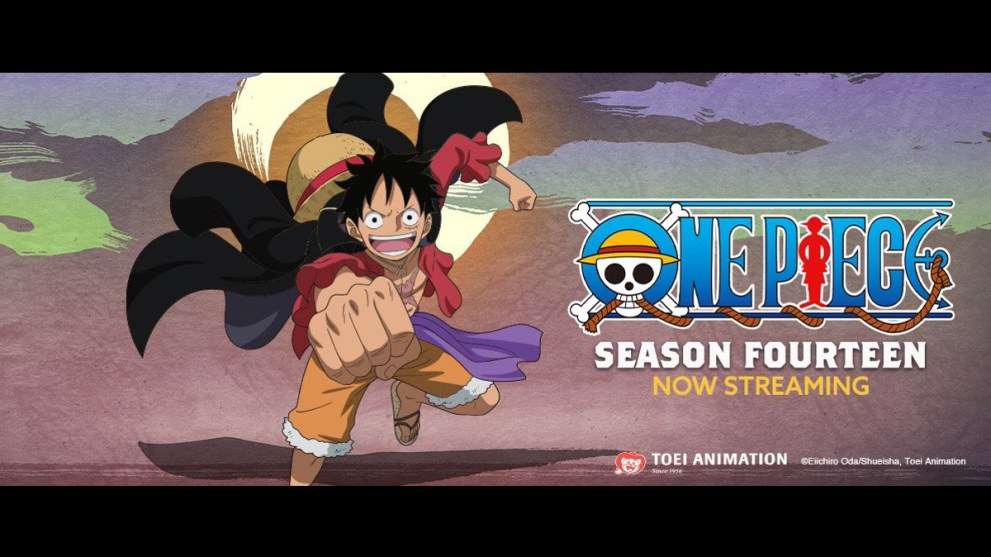
During several points where the animators had to wait for the manga to provide more story, the anime introduces Filler episodes. These episodes aren’t based on manga content and are standalone stories or arcs created to give the manga time to advance.
Over the years, fillers have gotten a bad rap for being slow, boring, and making fans more impatient as they wait for canon episodes. But this shouldn’t be the case. There are many One Piece viewers who favor the G-8 filler arc due to its instances of charming character moments and fun fight scenes in this arc that fans adore.
Additionally, the anime showed more background and stories of members belonging to the Charlotte family all the way to the fight against Sanji’s Germa family. Likewise, during the Water 7 arc, where there are pivotal storylines that see the Straw Hat crew face challenges both within and outside their group, there are notable differences between the filler episodes and the canon storyline.
For instance, while the manga strictly follows the plot involving CP9, the Galley-La Company, and the mystery of Robin’s betrayal, the anime introduces additional episodes, such as the “Ocean’s Dream” and “Foxy’s Return” arcs. These fillers, although entertaining, deviate from the main narrative to provide light-hearted or alternative scenarios. They are meant to provide a temporary respite from the intense drama of the main arc while still maintaining viewer engagement.
plus, during the Alabasta arc, a crucial saga involving the Straw Hat Pirates’ journey to stop a civil war in the desert kingdom of Alabasta, there are some great filler episodes introduced. The most notable filler during this arc is the “Post-Alabasta Arc,” which consists of a handful of episodes following the main Alabasta storyline.
These episodes delve into the aftermath of the crew’s confrontation with Baroque Works and Crocodile. Instead of continuing directly with the main plot, the anime showcases episodes that offer insight into the crew’s dynamics, such as Vivi’s decision regarding her future, and lighter adventures like the Usopp’s encounter with a bounty hunter named Daddy Masterson.
While these fillers do not contribute to the main story’s progression, they offer fans additional content and character moments that can be both entertaining and insightful.
Level of Brutality and Adult Themes
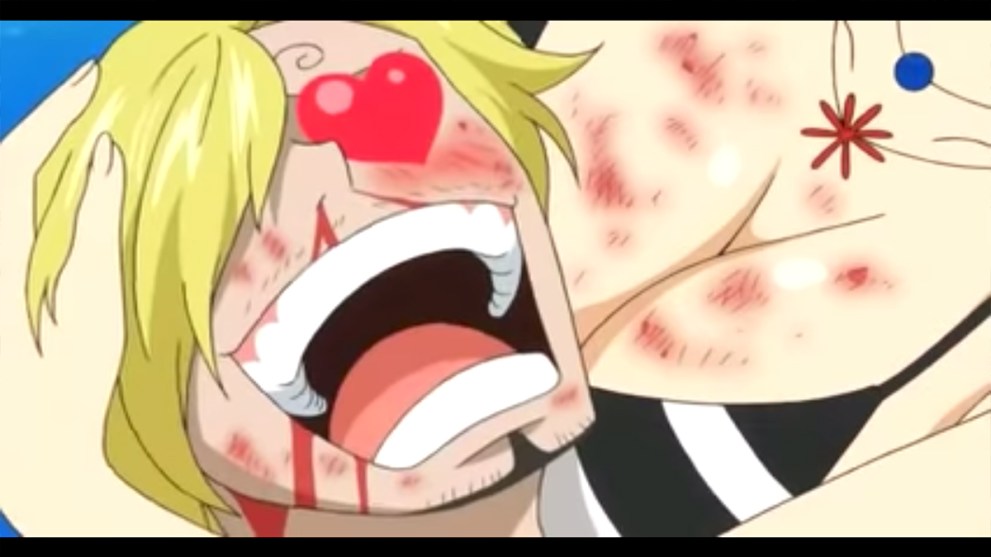
The manga tends to be more extreme in its depiction of violence and adult themes. Due to broadcasting regulations and to cater to a wider audience, the anime often tones down these elements, making certain scenes less graphic.
In the manga, Sanji’s childhood is even more brutal, with explicit scenes showcasing the physical abuse he endured from his brothers. This is softened in the anime, with less blood and scenes of abuse left more to interpretation in the way they’re presented.
Another moment is when Zeff, the chef of the Baratie, is depicted eating his own leg to survive after a shipwreck in the manga. However, in the anime, the incident is altered to show his leg getting trapped and then severed during the shipwreck’s rescue attempt.
These modifications can sometimes affect the weight and impact of scenes. The rawness of the manga scenes tends to deliver a more potent emotional punch, emphasizing the grueling circumstances that shape the characters’ resolves. While the anime attempts to capture the essence of these moments, the toning down can, at times, dilute the intensity originally intended by Oda.
Manga Cover Stories
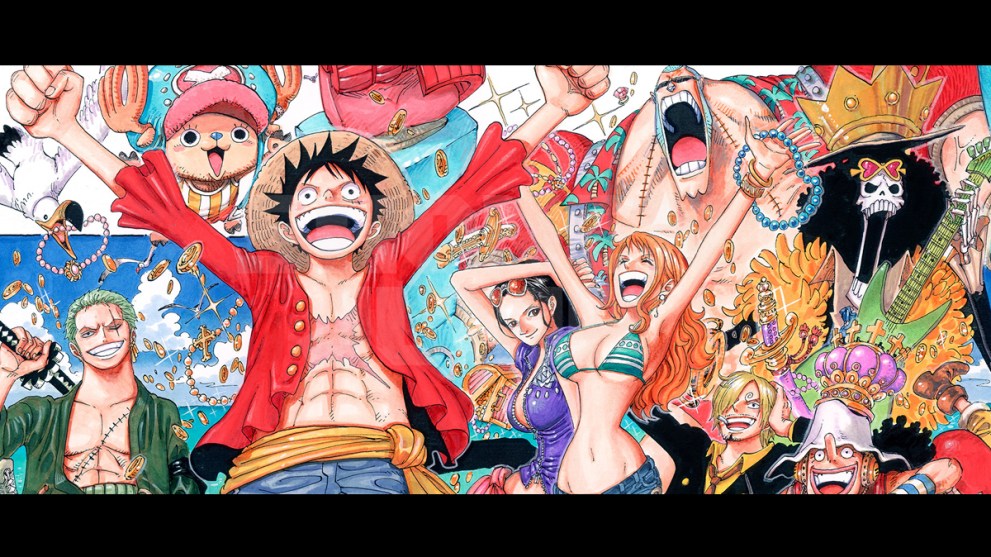
One of the best and most overlooked features of the One Piece manga, and something that isn’t typically included in the anime, are its “Cover Stories.”
Similar to the franchise’s Color Walk art books, these cover panels depict ‘slices of life’ snapshots. These snapshots can provide a backstory for existing characters, what’s been happening with other characters in the arc, plot developments in the background, or side stories related to the main crew. While some of these stories have been adapted into the anime as episodes or mini-arcs, many remain exclusive to the manga.
Anime-Specific Omissions and Alterations
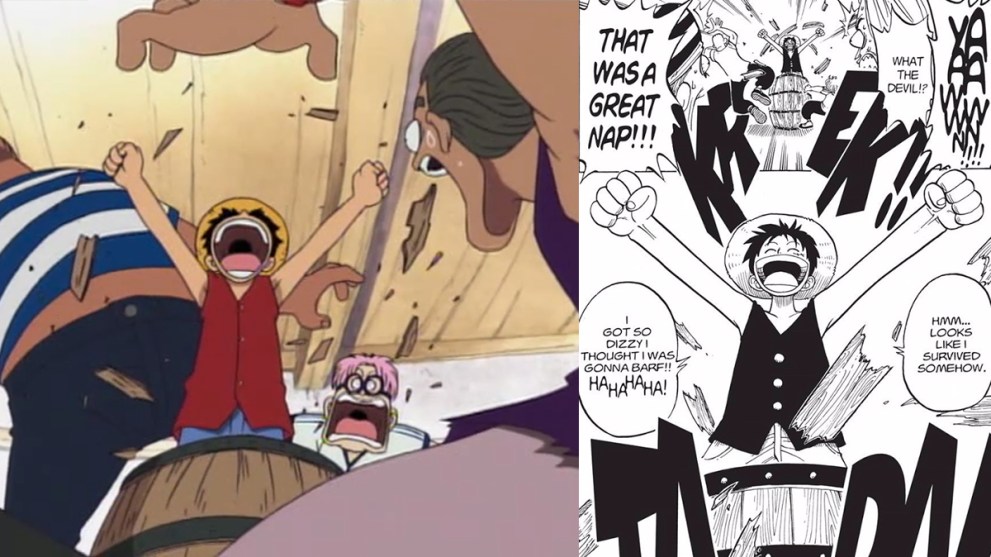
There are also critical details in the manga that are not shown in the anime or were changed for various reasons. Here are most of the key changes you need to be aware of that were shown in the manga and changed for the anime:
- Luffy slices his face with a knife to prove his commitment to being a pirate giving him the cheek scar
- Luffy doesn’t meet Koby in the manga until after escaping Alvida’s ship and making it to shore in a barrel
- Zoro killed Helmeppo’s wolves / dogs
- While Zoro is fighting Cabaji, Zoro cuts himself to prove his ability to fight while wounded instead of letting Cabaji cut him
- Arlong shoots Bell-mère point blank in the head
- Zeff lost his leg by smashing it off with a large jagged rock and eating it, while in the anime he cut it off while it was trapped under ship debris
- Sanji started smoking to prove he was an adult
- Hiriluk’s introduction is lengthier, and instead of making a patient act like a frog he knocks out the patient and his wife after fleeing a house fire he started
- Sanji gets stabbed in the back by a sword from Abasalon and it stays impaled for a few panels
- Trafalgar Law flips off Kid at the auction house
- Akainu punches half of Whitebeard’s face off with his magma fist
- Ace originally had a manji back tattoo with Whitebeard’s logo (meaning 10,000 character from Buddhist origins) which was later replaced with a cross
And that covers the more substantial differences between the One Piece anime and manga you should know about. There are likely to be many more differences that pop up as the series continues, and we’ll be sure to update this article accordingly as new differences are found. In the meantime, you can find even more articles and coverage of the series down below.

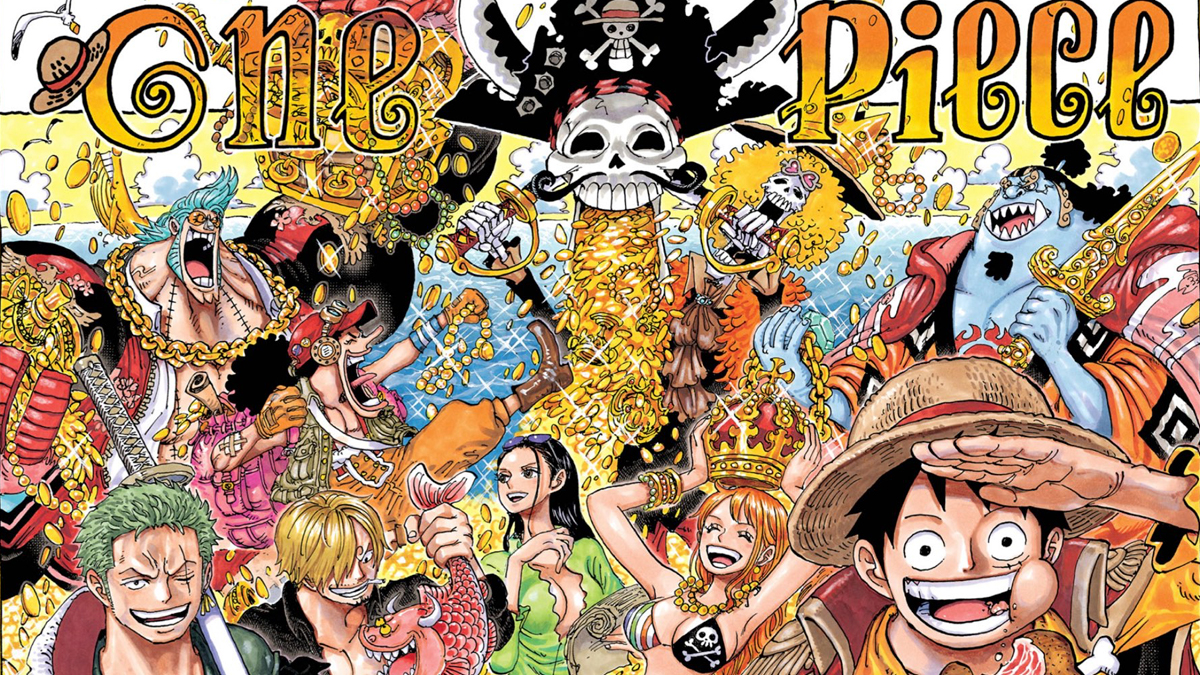












Updated: Aug 29, 2023 10:50 am